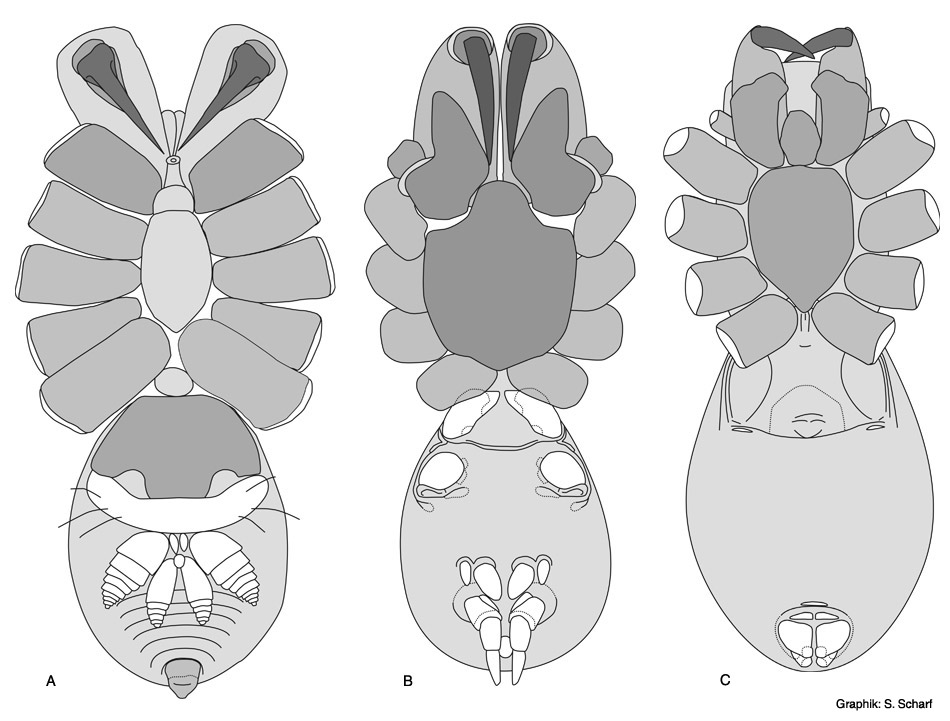Systematics and Evolution
The spiders (Araneae) compose an order within the Arachnids class (Arachnidae). As common characters they show a body divided in two main parts: the forepart or "Prosoma" with four pairs of extremities for locomotion and the afterbody or "Opisthosoma". Furthermore they have a pair of palps as mouth parts (Pedipalpi) and the ability to produce silk.
In terms of evolution history the Araneae are divided in the following sub-groups:
Mesothelae: as the most primordial taxon they still show a distinct segmentation of the body.
Opisthothelae: in the course of the evolution the frontparts with the locomotive limbs were merged together to the prosoma. The rest of the segments composed the sack-like Opisthosoma.

Körpergliederung einer weiblichen Gliederspinne
The Opisthothelae are further divided in the more primal tarantulaform Spiders (Mygalomorphae) and the more "modern" literal weavers (Araneomorphae).
Mygalomorphae: the chelicera are horizontal forward adjusted (orthognath position). In general they possess 2 pairs of spinnerets.- Araneomorphae: the chelicera are aligned in a orthogonal position to the body (labidognath position). They normally have 3 pairs of spinnerets.
There are about 39.000 scientifically described species worldwide. They are currently divided in 108 families. Thereof 2500 species in Mygalomorphae and 36.000 in the Araneomorphae are known. In Brazil actually 3387 spider species from between 60 to 65 families are described. In the Mata Atlântica at least 1500 species from about 55 families are registered.

Araneae Subgroups (a - Mesothelae, b - Mygalomorphae, c - Araneomorphae)